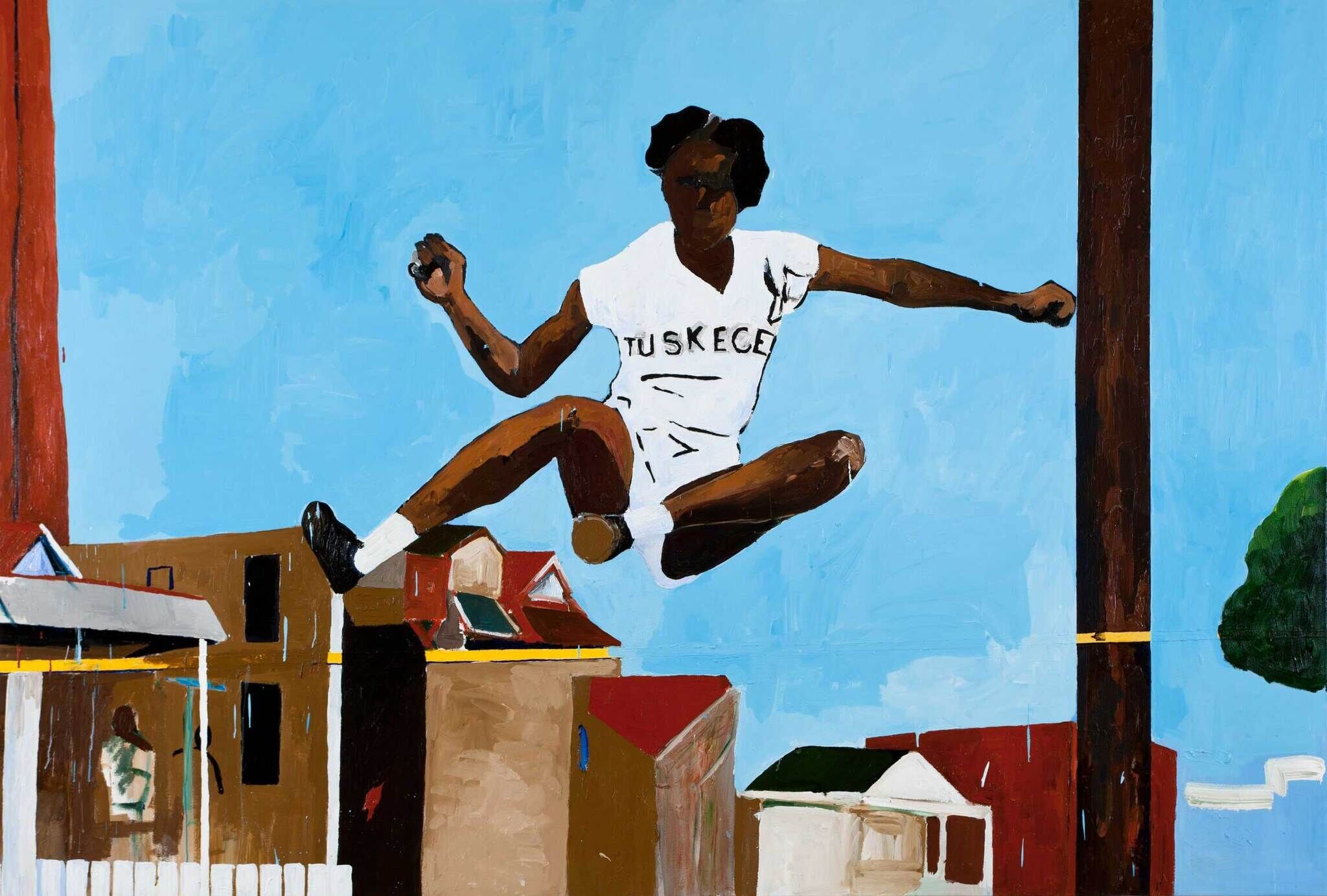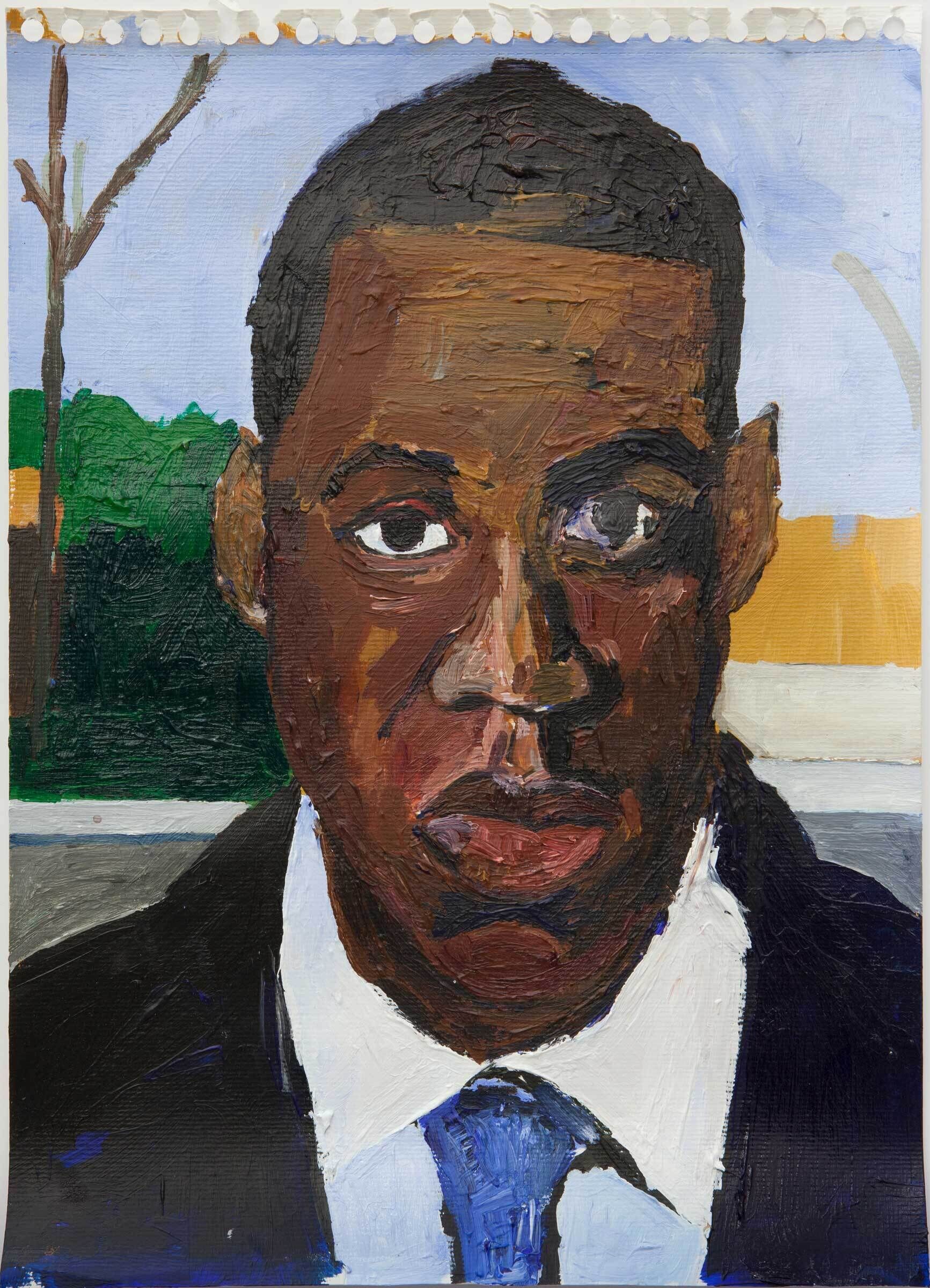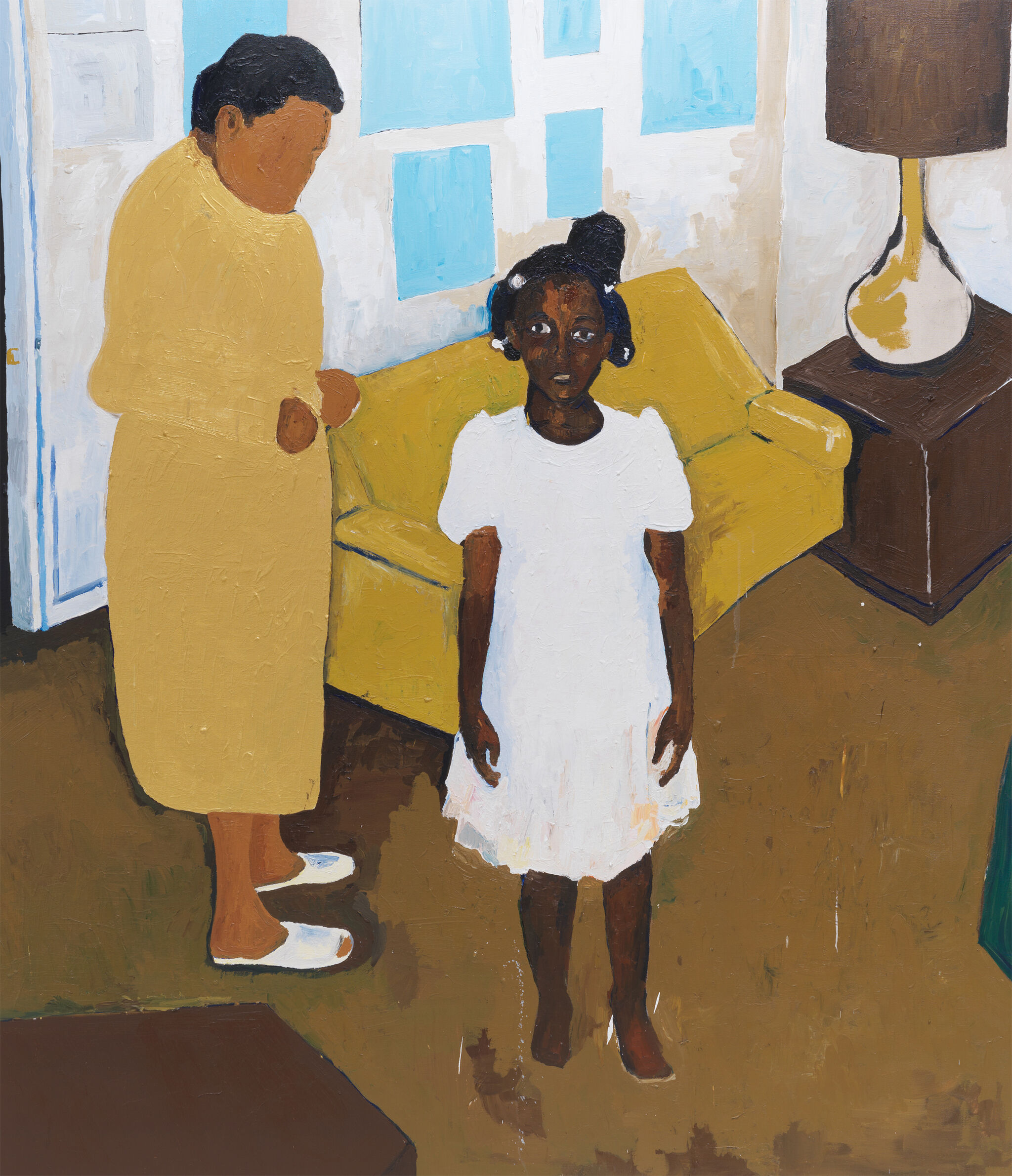Icons and Legends
During the 1948 Summer Olympics in London, the track and field athlete Alice Coachman (1923-2014), at the age of twenty-four, set a record in the high jump. She was the first Black woman from any country to win a gold medal. This accomplishment symbolized hope for Black people at a time of racial injustices in the United States. Taylor’s portrait of Coachman is based on a photograph taken of her while training. He removed the high jump crossbar and athletic field, instead adding houses, a tree, and a telephone pole. This transformation metaphorically alludes to the social and economic obstacles Coachman overcame growing up in the segregated South.
Taylor’s portrait I Am a Man, 2017, is of Shawn Corey Carter (b. 1969), known professionally as Jay-Z. The painting was commissioned for the 2017 New York Times Style Magazine cover and article on the rapper, record producer, and entrepreneur. The artist made the painting from memory. The title references the “I Am A Man” signs Black protestors wore during the 1968 Memphis Sanitation Workers Strike. It protested low wages and dangerous working conditions and began after two employees were killed by their malfunctioning garbage truck. Martin Luther King Jr. (1929-1968) marched alongside the sanitation workers in Memphis, gave a powerful speech on April 3, and was assassinated the next day.
Activities
How would you celebrate an unknown icon?
Taylor’s portraits include depictions of famous historical and living celebrities, politicians and athletes, among others. The artist addresses known and unknown subjects with equal respect and empathy. Ask students to think of a remarkable person they know well. Have them brainstorm how they could advocate for this individual so everyone can learn of their importance. Invite students to devise projects, such as monument designs, poster campaigns, social media posts, calling cards, etc., to honor their personal icons.
How could you compare past and present icons and legends?
Taylor’s painting of Alice Coachman is based on a photograph of her as a student at the Tuskegee Institute, one of the earliest Historically Black Colleges and Universities in the U.S. Outlining his artistic process, he mentions, “If I find a photograph that gives me a feeling, I’ll paint it. It’s about the composition.” Invite each student to find two photographs, one of past and another of present legends and/or icons they admire. Have them write about each figure to compare and contrast the legacies they both represent.
How would you represent perseverance?
Taylor sometimes depicts past and present activist struggles for justice and equity. Instruct students to write about how icons and legends persevere amidst challenges. Inspire them to visually represent their findings and writings using various art supplies of their choice.
How could you memorialize a mentor?
Taylor met the artist James Jarvaise (1924-2015) while studying art at Oxnard College. Jarvaise was an abstract painter and the Head of the Department of Fine and Performing Arts. He was instrumental in encouraging Taylor to pursue artmaking. He recounts, “Jarvaise was significant to me because he changed my life.” Invite students to talk with a partner about a mentor who has impacted their lives. Instruct them to create an artwork that serves as an homage to their mentors. They can use painting, sculpture, photography, and/or writing as their medium.



